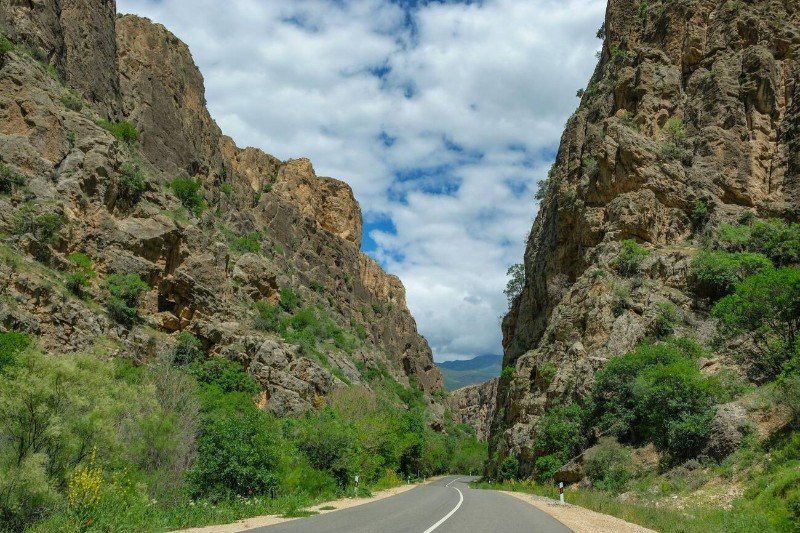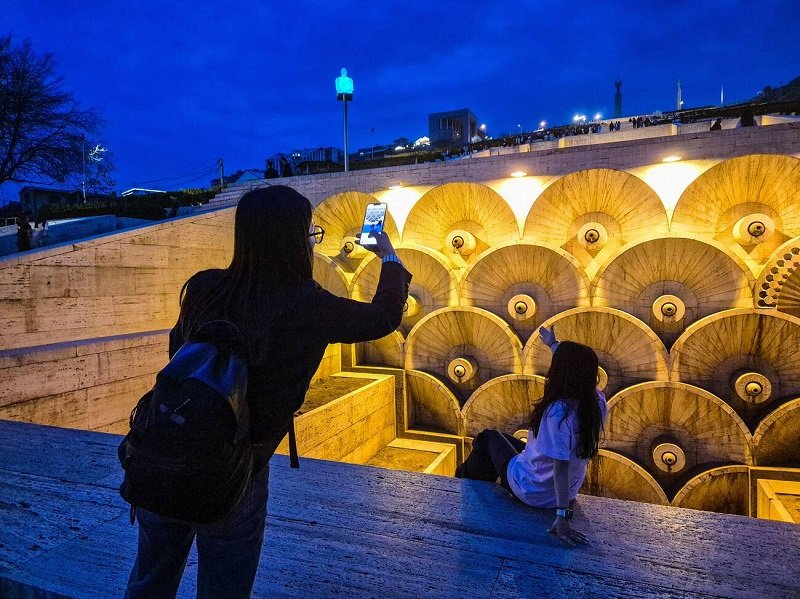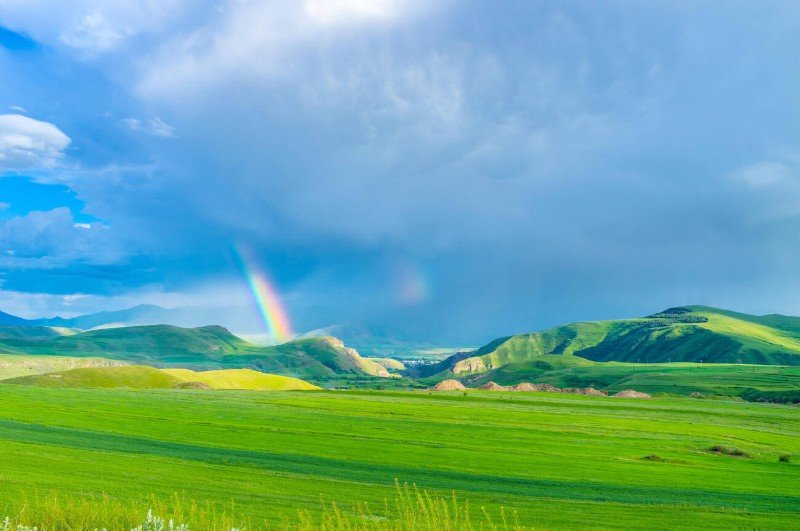Armenia’s rocks hold an incredible history. For thousands of years, ancient people created petroglyphs in Armenia across the country. Consequently, these remarkable rock carvings offer a direct look into the past. They provide a unique record of ancient life, beliefs, and culture.
This guide will focus on the most important sites. We’ll explore the art and history found on Mount Ughtasar and in the Gegham Mountains. We will also discuss the meaning behind these images.
So, follow Armenic Tours to know more about these ancient carvings.
Unearthing Armenia’s Ancient Petroglyphs
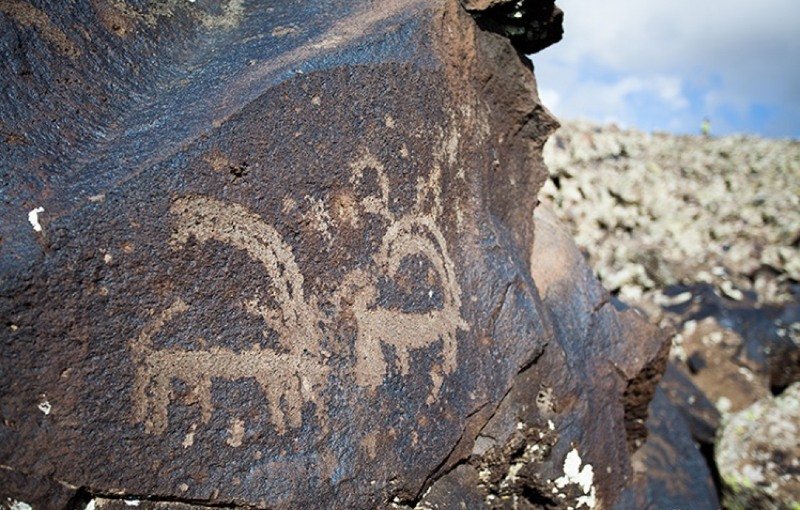
The petroglyphs in Armenia are images carved into rock surfaces. The word comes from the Greek words petra (stone) and glyphein (to carve). People worldwide created this art. However, Armenia’s collection is especially significant.
Most of these carvings date back to the Chalcolithic and Bronze Ages, between the 5th and 1st millennia B.C. Later Iron Age cultures also added new carvings. The oldest images are even older, from the Paleolithic era, around 12,000 B.C.
These ancient carvings appear on flat, dark volcanic stones. The thin, light-colored line from the carving process stands out against the dark rock. Ultimately, the sheer number of these artifacts makes them an unparalleled resource for historians.
The Famous Petroglyphs of Mount Ughtasar
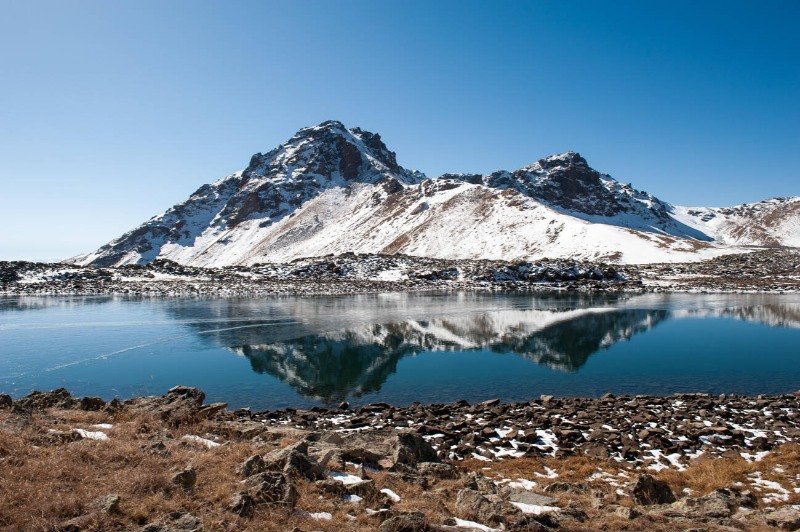
Mount Ughtasar stands in the Syunik Province of southern Armenia. This area holds one of the most concentrated collections of petroglyphs in the world. The carvings sit on a volcanic mountain. The name “Ughtasar” means “Camel Mountain” in Armenian. This name comes from the camel-like shape of the mountain.
The petroglyphs are carved onto large, dark stones. A now-extinct volcano left these stones behind. For instance, you can find more than 2,000 decorated rock fragments here. These stones show a wide range of subjects. Animals are a very common theme. They include goats, deer, mouflons, and bulls.
Many images at Ughtasar show hunting scenes. For example, they depict people with bows and arrows. Furthermore, other carvings show ritual scenes, including dancers and mythical creatures. Geometric shapes and cosmological symbols also appear often.
Visiting Mount Ughtasar
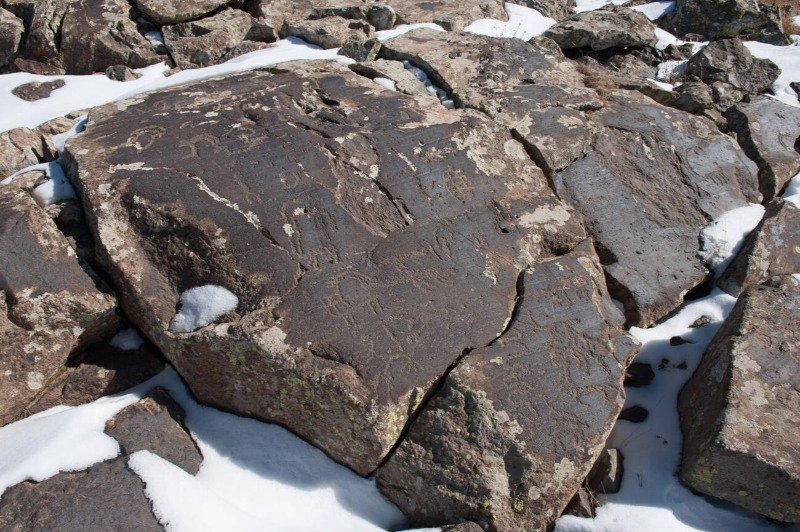
Reaching the Ughtasar petroglyphs requires an off-road vehicle. Therefore, the site is only accessible during the summer months, from late June to early September. Because of the climate, snow covers the mountain the rest of the year. Travelers should consequently prepare for a challenging journey.
The site sits around a lake in a caldera. The high altitude means cold weather and strong winds, even in summer. This remote location, therefore, has protected the carvings for thousands of years. The Ughtasar Rock Art Project is actively working to document and preserve the carvings.
The presence of so many carvings here suggests Ughtasar was a temporary home for nomadic cattle-herding tribes. These people used the high pastures for their animals during the summer. Thus, the petroglyphs record their daily activities, spiritual beliefs, and connection to the landscape.
The Petroglyphs of the Gegham Mountains
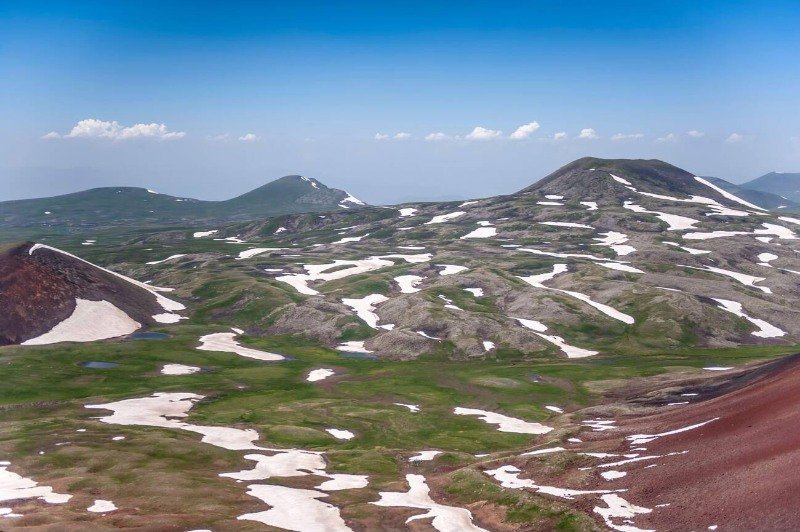
The Gegham Mountains offer another significant petroglyph site. This volcanic range is located east of Lake Sevan. Thousands of rock carvings are scattered across its slopes and valleys. The carvings here are similar in style and theme to those at Ughtasar, thereby showcasing the widespread nature of this ancient art.
The Gegham petroglyphs depict a variety of animals. Wild goats and mouflons are especially prominent. Hunters and animals appear together in many scenes. These scenes suggest the importance of hunting for survival. People also carved mythological figures and celestial bodies. This indicates their complex spiritual worldview.
The carvings on Gegham’s rocks offer clues about ancient rituals. For instance, some images show people in what appear to be dance circles. These ritualistic scenes consequently highlight the communal and spiritual life of the artists. Other carvings show plowing scenes with harnessed bulls, revealing details about early agricultural practices.
Techniques and Meanings of the Carvings
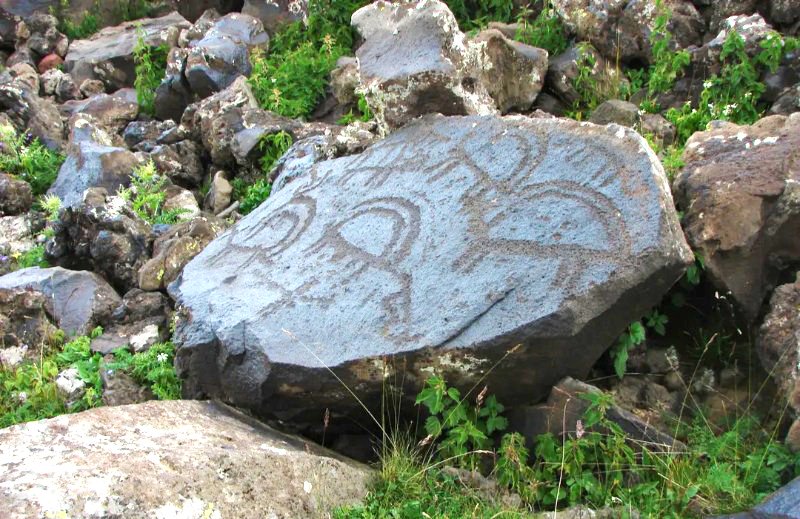
The ancient artists used simple tools to create the petroglyphs. They often used a pecking technique. They would strike the rock with a harder stone to chip away the surface. Sometimes, they used scratching or incising for finer lines. Ultimately, the skill and precision in these carvings are impressive.
Scholars classify the petroglyphs into several categories, including scenes related to:
- World creation and fertility: Depictions of symbolic trees and figures.
- Magic and ritual: Scenes showing dances, processions, and offerings.
- Cosmological ideas: Images of the sun, moon, and constellations.
- Symbols and signs: Various geometric patterns and marks.
- Imaginary creatures: Mythical animals and human-animal hybrids.
These images tell us more than just daily life. They speak to the deepest concerns of ancient people. They show us their fears, hopes, and beliefs. The art communicates their relationship with the natural world and the supernatural.
The Enduring Mystery of the Carvings
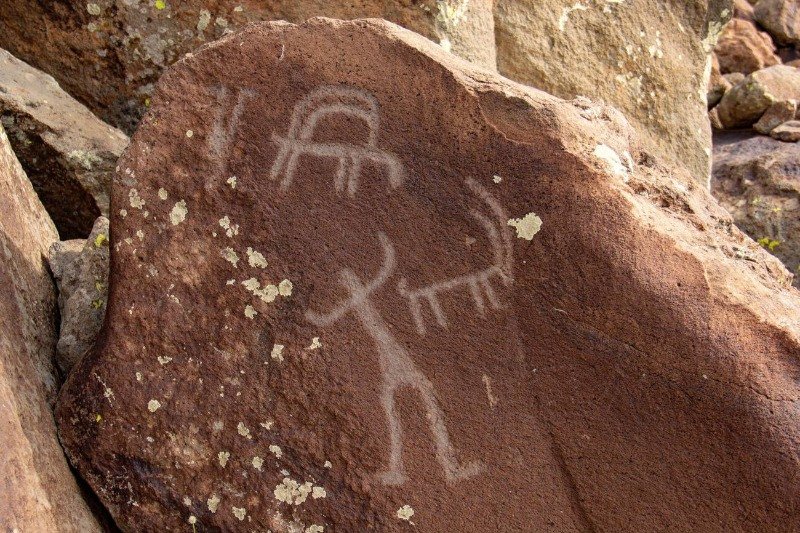
Scholars continue to study the meaning of these petroglyphs in Armenia. They likely served multiple purposes. They recorded historical events, conveyed spiritual beliefs, and marked territory. Some believe these ancient images formed a type of pictorial writing. The Armenian word for petroglyph, “itsagir,” translates to “goat writing.” This term connects to an old belief that the word for “goat” was a homonym for “writing” in ancient Armenian.
The carvings give us a window into ancient Armenian cosmology. Images of the sun and stars are common. They suggest early astronomical observations. The petroglyphs show a deep respect for nature and the cosmos. The art reflects a culture closely tied to its environment.
Preservation and Future Exploration
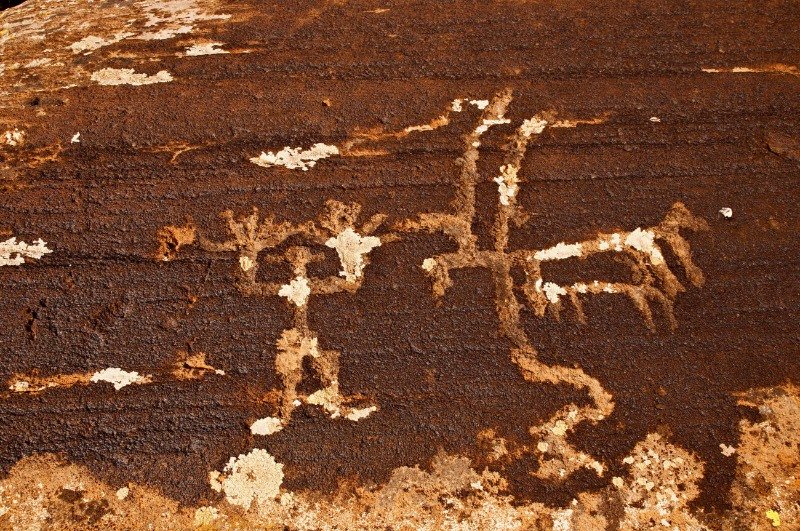
The petroglyphs face threats from natural erosion and human activity. The harsh climate, with its extreme temperatures and rainfall, slowly damages the carvings. As a result, many carvings show signs of weathering.
Conservation efforts are underway to protect these sites. Researchers are using modern technology to document the petroglyphs. They use high-resolution photography and 3D scanning. This creates a digital record of the art before it disappears.
Ultimately, Armenia’s petroglyphs are a global treasure. They offer a unique perspective on the ancient world. They stand as a testament to human creativity and communication. The carvings are a powerful reminder of our shared history.
Conclusion
Petroglyphs in Armenia represent an extraordinary archaeological heritage. The rock carvings on Mount Ughtasar and in the Gegham Mountains provide invaluable insights into ancient life. They reveal the beliefs, rituals, and daily struggles of prehistoric peoples. These images are not just static art. They are dynamic stories written in stone. Therefore, they continue to fascinate historians and travelers today. Their preservation is vital for future generations to connect with this rich past.
FAQ
What is the best time of year to visit the petroglyphs in Armenia
The best time to visit the major petroglyph sites, like Mount Ughtasar, is during the summer months. Access is only possible from late June to early September. Snow covers the high-altitude areas for the rest of the year.
What do the petroglyphs in Armenia depict
Armenian petroglyphs depict a wide range of subjects. Common themes include animals, such as goats, deer, and bulls. Hunting scenes, ritual dances, and symbols are also frequent. The carvings reveal information about daily life, cosmology, and ancient spiritual beliefs.
Are the petroglyphs in Armenia a form of writing
Many scholars believe the petroglyphs served as a form of communication. They may not represent a complete writing system, but they clearly conveyed specific messages. The ancient Armenian term for petroglyph, "itsagir," which means "goat writing," supports this idea.



